Virunga National Park
Virunga National Park, also known as Parc National des Virunga, is an ideal place for adventurous travelers seeking a thrilling and less crowded experience. Virunga National Park spans an elevation range of 680 m (2,230 ft) in the Semliki valley to 5,109 m (16,762 ft) at Mt Stanley, which is located on the summit of the Ruwenzori Mountains to the east of the Democratic Republic of Congo. Virunga National Park, previously known as Albert National Park, spans an area of approximately 8,090 km2 (3,120 sq mi).
Virunga, established in 1925 by Frankfurt Zoological, is the oldest wildlife protected area in Africa. Its primary objectives are to save and preserve the distinctive wildlife species found within its boundaries, facilitate scientific research, and protect the Twa community, who rely on collecting fruits and are at risk of displacement. The Virunga wildlife conservancy is located at the convergence point of the West African rainforests and the East African savanna grasslands. It stretches across a distance of more than 300 km (190 mi) along the Albertine rift, which divides the African continent from north to south.
The remnants of Virunga’s diverse ecosystem, which consists of block mountains, volcanic mountains, the Albertine rift, craters and crater lakes, rainforests, woodlands, open grasslands, swamps and wetland vegetation, among other features, also extend into Uganda’s Bwindi Impenetrable, Queen Elizabeth, Semliki, Ruwenzori, and Mgahinga National Parks, as well as Volcanoes National Park in Rwanda.
On 1979, the Virunga was designated a UNESCO World Heritage Site due to its biological significance, despite the adverse effects of political unrest on its conservation efforts. The war era in Rwanda throughout the 1990s posed significant challenges to the Virunga conservancy due to a large influx of refugees who encroached upon the wildlife resources in the area. The Virunga reserve was designated as a World Heritage site in danger in 1994 and was subsequently recognized as a Ramsar site of global significance in 1996. Virunga remains a robust biological cornerstone for the entire ecosystem of East and Central Africa.
How to get to Virunga National Park
Virunga National Park is situated in the eastern region of the Democratic Republic of Congo. Traveling by road to Virunga is difficult compared to other parts of DR Congo, with the exception of Goma Town, which is only 32km away. A significant number of tourists visiting Virunga National Park opt to go by air to Kigali International Airport, then proceed by car through Gisenyi town, and then cross into Goma in the Democratic Republic of Congo on an unpaved road. It takes around two hours to drive from Gisenyi to the park headquarters in Bukima. Travelers originating from Uganda can enter through the Bunagana border post located in Kisoro town. From there, it is a one-hour drive to reach Bukima, which serves as the starting point for the Mountain gorilla hike. Ethiopian Airways runs a solitary flight every week to Goma. The park provides exclusive transportation for individuals who arrive by air at Goma Airport. Consult Virunga National Park for expert advice on the optimal method of accessing the park. Occasionally, travelers may require the assistance of ranger escorts to navigate the most optimal route to reach the tourism zones.
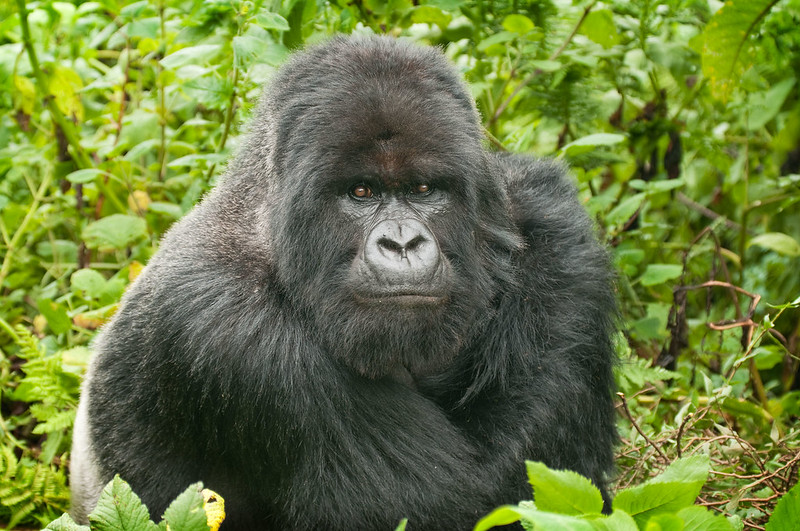
Attractions in Virunga National Park
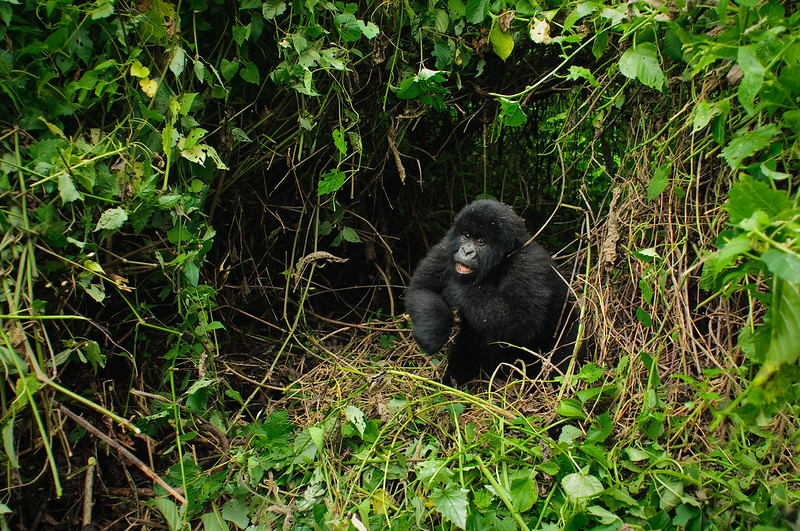
Climate : The Virunga National Park is a coveted destination for many people due to its delightful warm climate and gentle rainfall. The equator passes across the Virunga region and brings with elevated temperatures. Certain regions of Virunga experience consistently low temperatures due to their higher elevation. The Virunga volcanic soils possess abundant nutrients that promote plant growth, while suitable temperatures facilitate rapid plant growth. The adjacent huge bodies of water, including Lakes Kivu, Edward, Albert, as well as many smaller lakes, and the rivers Congo, Nile, Semliki, along with their tributaries, offer refreshing winds and are perfect for engaging in water-based adventure pursuits. These characteristics combine to provide a delightful blend of tropical and equatorial climate, with an average rainfall of 190 mm (7.5 in). The mean temperatures in the lowlands range from 23 to 28 °C (73 to 82 °F), whereas at higher altitudes they range from 16 to 24 °C (61 to 75 °F). The months of March to May and September to November are characterized by significant rainfall and a sharp decrease in nighttime temperatures. The environment in Virunga is consistently conducive for travel and investigation of its attractions throughout the year.
Wildlife in Virunga National Park
The abundance and diversity of wildlife species and populations in Virunga National Park leave guests in awe on their tours. The Virunga has been able to maintain its purity and integrity due to a mix of favorable meteorological conditions, fertile soils with abundant mineral content, and a small number of visitors that explore and disturb the fauna. The conservancy is abundant in diverse wildlife species, flourishing plant life, and encompasses a remarkable total of 2,077 plant species. Among these, 264 are classified as tree species, while 230 of the grasses, shrubs, and plants are exclusive to the Albertine Rift region. The water bodies are surrounded by swamp and wetland flora, which gradually transitions into open grasslands, woodlands, rainforests, montane forests, heath, and alpine vegetation in the highlands. The Virunga is a prime tourist destination for adventurous travelers who have a keen interest in exploring and uncovering the hidden beauty of the African bush, amidst its abundant and vibrant vegetation.
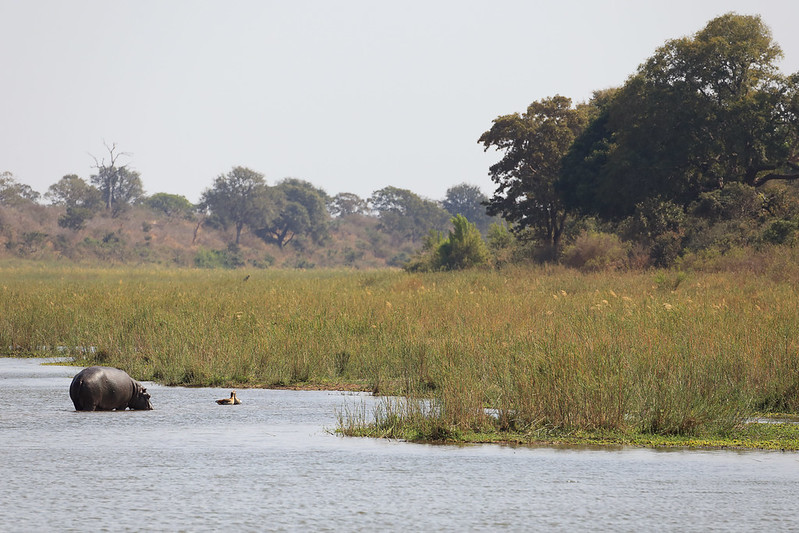
Mammals in Virunga National Park
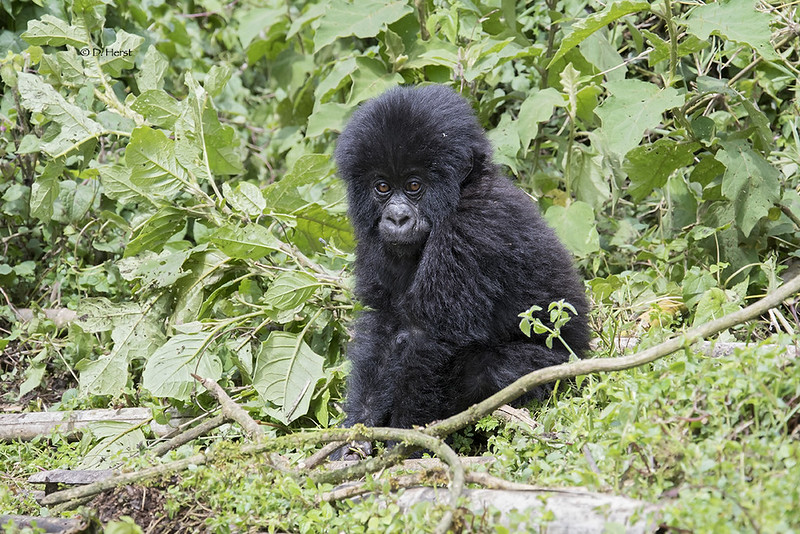
The Virunga is teeming with breathtaking beauty, seen in its wide range of geography, land formations, vegetation, and plant species, making it a haven for mammals. The Virunga National Park provides optimal habitat conditions for all animal species. The 2012 animal census documented a total of 218 mammal species, out of which 22 were primates. Additionally, the census identified 706 bird species, 109 reptile species, and 65 amphibian species. Visitors to Virunga National Park can choose from a variety of activities to observe animals, such as game viewing drives, nature walks, hikes, boat cruises, or jungle trekking. Elephants, buffalos, lions, hippopotamus, leopards, okapis, bongos, warthogs, waterbucks, bushbucks, blue duikers, bay duikers, yellow backed duikers, red river hogs, giant forest hogs, topis, aardvarks, kobs, and various other species have been observed in open grasslands or water habitats. The rainforests, montane forests, and alpine vegetations are optimal habitats for observing primate species. Travelers who hike through the rainforests to see Mountain gorillas and track chimpanzees have a great chance of encountering various species of monkeys, including red-tailed monkeys, De brazza’s monkeys, blue monkeys, golden monkeys, Dent’s Mona monkeys, Hamlyn’s monkeys, Central African red colobus monkeys, mantled guerezas, grey-cheeked mangabeys, black and white colobus monkeys, and olive baboons. Nile crocodiles and monitor lizards are frequently observed on the coasts of Lakes Edward and Albert, as well as along the Semliki River.
Activities at Virunga National Park
Mountain gorilla trekking in virunga National Park
Mountain gorilla trekking is only possible in the Virunga mountain, which spans across Rwanda and Uganda and is the sole habitat for these gorillas on the planet. Trekking safaris to observe mountain gorillas in Virunga National Park are the most widely favored tourism activity in the Democratic Republic of Congo. Despite the vast expanse of Virunga National Park, the population of mountain gorillas is rather small. Only six families are available for tourism operations. The Kabirizi family is well-known among many people who embark on gorilla trekking safaris in the Democratic Republic of Congo. Kabirizi is the alpha male of a polygamous gorilla group, known as a silverback, which consists of around thirty individuals.
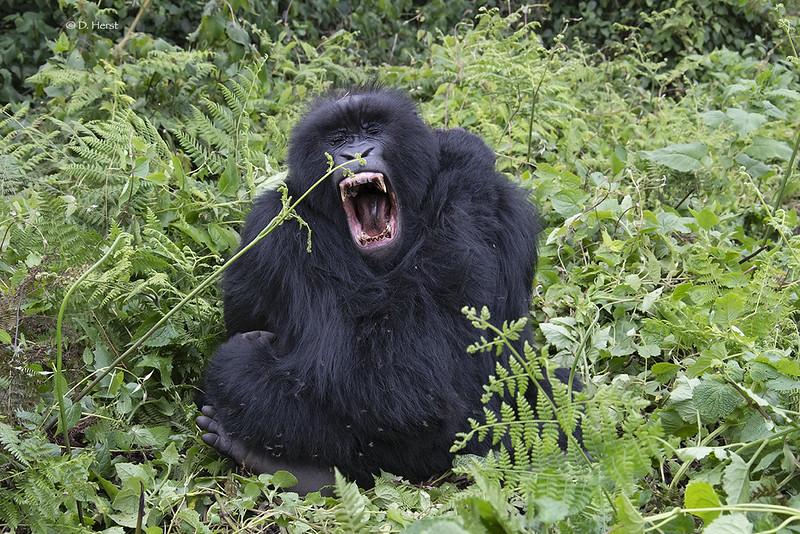
Chimpanzee tracking Virunga National Park
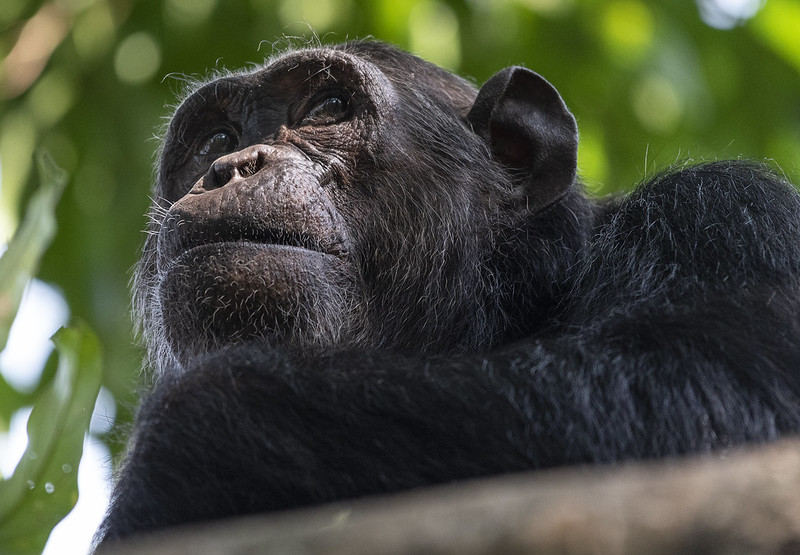
Chimpanzee tracking and habituation are highly sought-after tourism activities in the Virunga region. These virunga national park safaris, initiated in 1987 by the Frankfurt Zoological Society for research objectives, have become the second most popular attraction for tourists. Adventurers enter and investigate the jungles in search of chimpanzee families that are less disturbed by the inquisitive gazes of travelers. Chimpanzee-tracking tourists are limited to a one-hour period of interaction with the chimps. The chimpanzee habituation exercise is a thrilling vacation experience that allows guests to have unrestricted interaction with families of chimpanzees for an entire day. The chimpanzee habituation teams embark on their expedition in the early morning, venturing into the rainforests in search of chimpanzees before they depart from their sleeping spots. They spend the entire day closely studying and uncovering the behaviors of the chimps, until evening when they construct nests for the night.
Nature Walks in Virunga National Park
Virunga National Park is predominantly characterized by a tropical rainforest ecosystem, with luxuriant foliage and offering opportunities for nature treks. Nevertheless, certain areas consist of forests, meadows, and wetlands. Adventure travelers embarking on a safari to Virunga commence their journey in the morning and head into the untamed wilderness to investigate and uncover the awe-inspiring splendor of the region and its surrounding wilderness. A well-established network of trails guides explorers to hidden areas where they can witness extraordinary sights and experience distinctive noises emanating from the untamed nature.
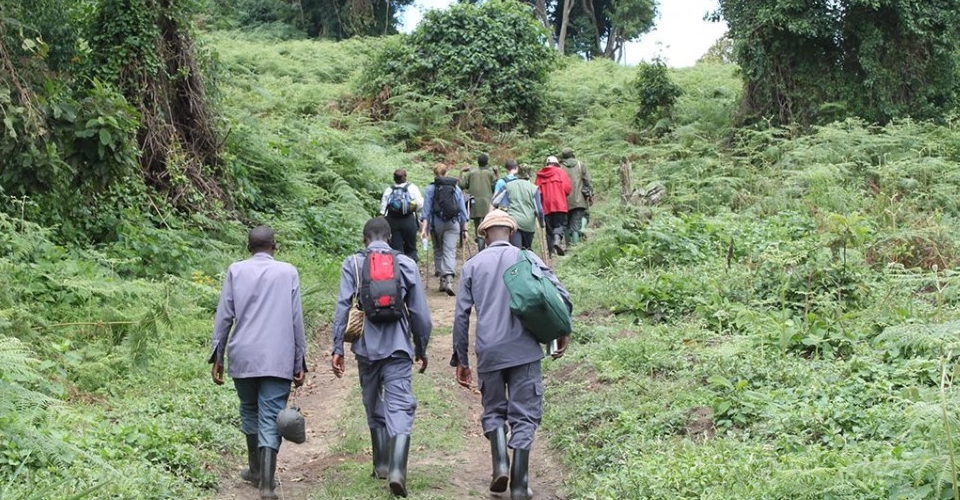
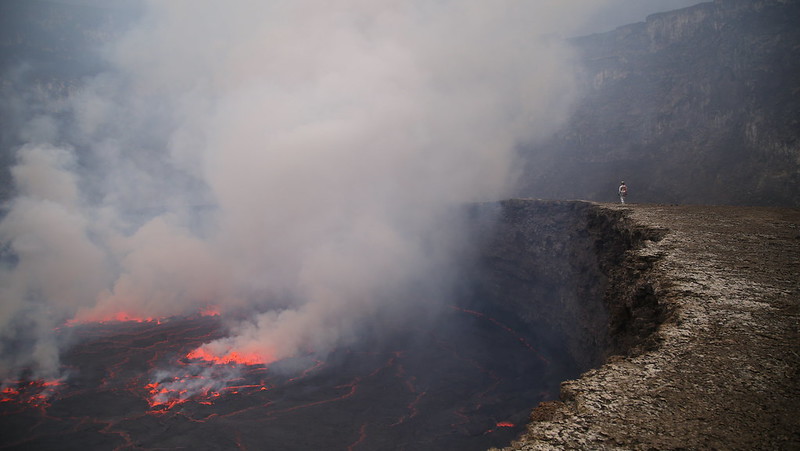
Nyiragongo hiking in virunga national park Congo
The Nyiragongo walk in Virunga National Park is a vacation location that is abundantly blessed with natural beauty. Nyiragongo is a perpetually active volcano characterized by a continuous volcanic eruption occurring within a lava lake. Trekking to the peak of Nyiragongo and witnessing the extraordinary natural phenomenon of scorching molten lava erupting from the earth’s crust is an exceptionally uncommon experience, reserved for those with great fortitude. The Nyiragongo hiking safari is a challenging expedition that tests the courage of people and provides a unique chance to spark their spirit of adventure.
Bird watching in Virunga National Park
Bird watching at Virunga offers a diverse array of habitats, including mountains, rainforests, open grasslands, swamps and marshes, water bodies, and rift valleys. These attract many avian species, resulting in over 706 documented sightings. The bird watching expeditions in Virunga have immense potential, but now, the opportunities are not properly utilized. The Grey throated barbet, Madagascar bee-eater, Narrow-tailed starling, Ruwenzori turaco, African fish eagle, and various more species are frequently observed.
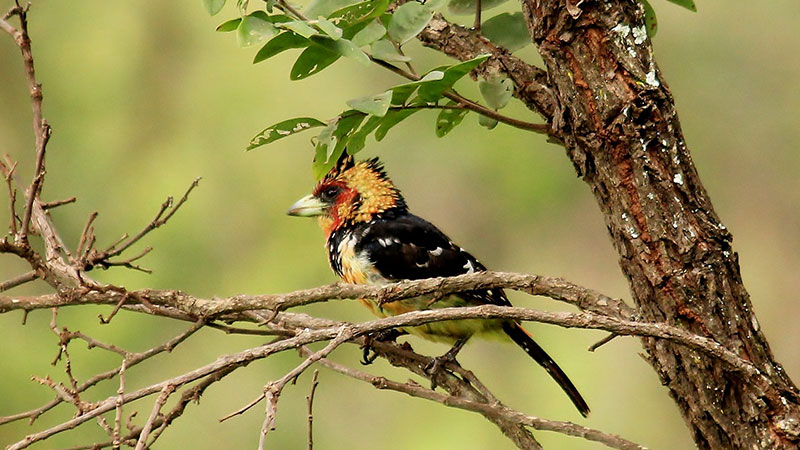
Where to stay in Virunga National Park
Mikeno Lodge is a quintessential African safari camp situated in the heart of the wilderness, providing an equal experience for both holidaymakers and wildlife enthusiasts. At all hours, one can witness breathtaking vistas of the Albertine rift and the neighboring Nyiragongo volcano. The lodge is located a 1.5-hour drive away from Goma, situated in the foothills of the Nyiragongo volcano. The lodge features twelve exclusive chalets, each equipped with invigorating hot showers constructed from durable volcanic lava rocks. These chalets are adorned with distinctive African elements, ensuring that tourists are left with indelible memories of their adventurous journey. The restaurant offers meals, while the bar is well-equipped with a wide selection of international beverage brands. This location is perfectly suited for initiating volcanic climbing and chimpanzee tracking missions. Mountain gorillas are in close vicinity, while magnificent birds fill the air with pleasant tunes from every direction.
The Lulimbi Tented Camp is situated in the expansive grassland adjacent to the River Ishasha, which serves as the international boundary between Uganda and another country. The tents offer exclusive amenities such as pristine running water, en-suite bathroom facilities, and solar-powered electricity. The safari camp is strategically located for guests seeking to experience the unexplored, undiscovered, and rarely discussed open grassland wilderness of DR Congo. The Lulimbi Tented Camp is a perfect location to commence wildlife observation safaris, bird watching expeditions, nature hikes, community excursions, boat trips, and sport fishing on Lake Edward. Travelers seeking to fully experience the thrill of an adventure excursion in the Virunga National Park would be extremely unlikely to miss out on visiting the Lulimbi Tented Camp.
Tchegera Island Camp is situated atop a caldera, providing a commanding view of Lake Kivu in the foothills. The camp features eight meticulously maintained and fully furnished individual tents. Meals are provided in the communal eating space, and the bar is well-stocked with beverages. The campfire is a highly recommended option for enjoying the evening and providing guests with the opportunity to witness a stunning display of colorful galaxies in the sky caused by the eruptions of Nyiragongo. It also serves as a platform for sharing safari experiences in the Democratic Republic of Congo and enjoying refreshing beverages of choice. Boat excursions, kayaking, and other beach activities on Lake Kivu are widely favored methods of leisure, offering guests numerous opportunities to explore the DR Congo.
Kibumba Tented Camp is situated in Goma, at the base of Nyiragongo Volcano, near the Rwanda border. The camp boasts a total of eighteen opulent individual tents, each equipped with spacious beds, invigorating bathrooms, reliable WIFI, and electricity. The establishment features a lounge, two well-organized eating rooms, and a fully equipped bar that offers a wide selection of beers, spirits, and wines from various worldwide markets. The location of Kibumba Tented Camp is advantageous for anyone planning to hike Nyiragongo, go on mountain gorilla treks, or engage in chimpanzee tracking expeditions in the Virunga National Park.
The Bukima Tented Camp is conveniently situated near the gathering area for Mountain gorilla trekking. It is worth noting that gorillas occasionally venture to the camp’s courtyard. The camp consists of five opulent tents, each offering privacy, equipped with cozy beds and featuring refreshing warm showers, all nestled among the African wilderness. The lodge offers unobstructed vistas of the Mikeno Mountains and serves as an excellent base for embarking on wildlife drives, Mountain gorilla trekking trips, bird viewing safaris, and nature walks in the bush. The camp is situated on the periphery of the Virunga National Park, making it an ideal starting place for community tours.
The Mt Nyiragongo Summit Shelters are the sole camp located at the peak of the active Nyiragongo volcano, in close proximity to the lava lake. The shelters offer elevated vantage points for observing the picturesque landscapes of the Virunga National Park, Lake Kivu, and the surrounding areas. The incandescent lava tinges the nocturnal skies with a crimson hue, bestowing upon the rest of the planet a vibrant spectrum of colors. There are 12 cabins available that provide simple lodging with spacious beds where tourists can place their sleeping bags. For guests who are concerned about the volcanic eruption in the lava lake, this type of accommodation for a night is an exceptional deal.
